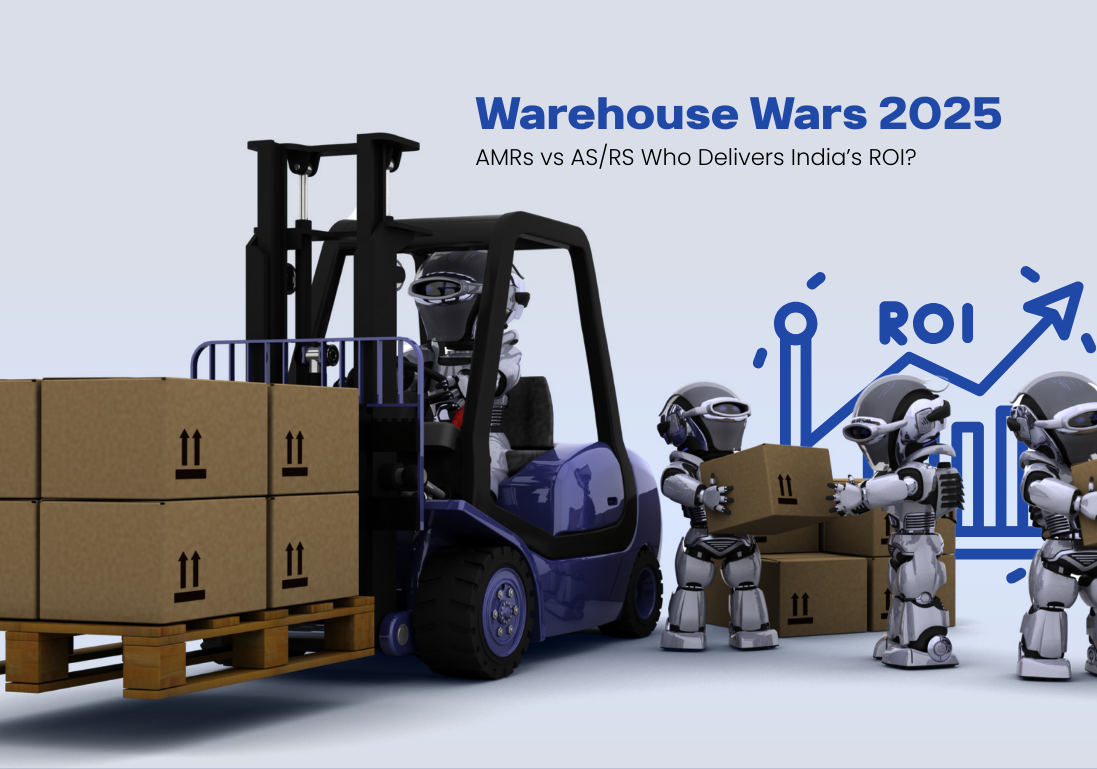Digital Transformation in India’s Supply Chain Industry
Quarter-end. Monsoon. A line of trucks curled around our plant like a stubborn necklace. Everyone had data. Yet, no one had a decision.
However, a young, soft-spoken shift supervisor picked up a marker and drew two columns on a whiteboard: “gate and go” and “hold.” Within two hours, chaos turned into rhythm.
We didn’t win an award for that day. Instead, we won something better a way to work. Years later, when the trophy finally came, it felt like a receipt, not a surprise.
Calm Supply Chains: The Competitive Advantage in India
That’s the thing about awards they show up only after customers already feel the difference.
India’s best supply chains don’t look glamorous from the inside. Instead, they look calm. Meetings end with names next to actions. KPI dashboards look deliberately boring, designed to avoid distraction. And conversations are refreshingly simple: “Can we promise this?” “Will it arrive on time?” “Does this reduce our cost to serve?”
In a market moving as fast as India’s, calm is not weakness. On the contrary, calm is a competitive weapon.
Decision-Ready Supply Chains vs Dashboard Overload
The winners are not obsessed with having 19 dashboards. Instead, they are obsessed with being decision-ready. That means a single shared definition of OTIF, clean master data, and a control tower that tells you what needs doing in the next hour not the next quarter.
Therefore, digital transformation earns its keep when analytics reduce forecast error, demand forecasting prevents firefighting, route optimization minimizes missed windows, and warehouse routines make last-mile delivery more reliable.
Scaling What Works on the Plant Floor
On the plant floor, the best teams don’t chase shiny pilots. Instead, they scale what works.
One auto client, for instance, moved to condition-based maintenance and shaved 20% off unplanned downtime. It wasn’t dramatic innovation it simply meant fewer 2 a.m. calls. IoT instrumentation, predictive maintenance, and smart factory routines all combine to lift OEE and create a rhythm that feels more reliable than revolutionary.
Logistics Innovation: The Hidden Edge of India’s Supply Chains
Logistics Innovation is where India quietly shines.
For heavy, predictable flows, road-only has been a habit. Nevertheless, winners test multimodal transportation rail or coastal when the math shows it will hold the schedule and cut both cost and emissions.
A real control tower is not a pretty map; it’s an operating rhythm that pings the right person when a lane slips, re-sequences docks before a jam, and helps teams keep promises without last-minute rescues. Even when road transport still makes the most sense (and it often does), leaders squeeze more out of it through tighter slotting, micro-fulfillment near demand, and more realistic promise windows.
Resilience and Cybersecurity in Indian Supply Chains
The market keeps testing resilience. Consequently, India’s top supply chains treat it as a discipline, not an afterthought.
Cybersecurity sits next to operations, not hidden in a silo. Leaders run zero trust frameworks, EDR/XDR, and practice recovery drills because four hours to normal beats four days of apologies. The same mindset extends to supplier risk: dual-source where it counts, simulate corridor disruptions, and maintain a live playbook.
No drama. Just readiness.
Sustainability in Supply Chain: Profitable and Practical Approaches
Sustainability can be noisy. Yet, the credible programs are quiet and precise.
Winners measure lane-level carbon footprints with proper accounting. They fix fast-payback areas such as energy retrofits, packaging right-sizing, and shifting logistics to greener modes like rail or coastal shipping. Above all, they treat decarbonization as profitable not charitable. Done right, it fattens margins, wins customers, and impresses lenders.
The Role of Finance in Supply Chain Success
Finance feels the supply chain first.
Winners adjust inventory posture by corridor risk, track cost-to-serve at SKU and channel levels, and shorten the cash conversion cycle. For example, one electronics maker recovered eight days of working capital by simply cleaning master data and eliminating “ghost” safety stock. The move drew no banners but delivered significant impact.
Culture and Tools: How India’s Supply Chain Winners Operate
Winning teams share a cultural edge. Exceptions are named, standups are short, and incentives tie directly to reliability and emissions not just “project completed.” Operators read OEE like a P&L, planners challenge forecasts, and security professionals think like adversaries.
Equally important, these leaders avoid overbuilding tools. They buy more than they build, invest in control towers and WMS/TMS with open APIs, and focus energy on decision rules that differentiate them. If data can’t leave the platform, they argue, it isn’t really yours.
India’s Digital Public Infrastructure: A Supply Chain Superpower
India’s digital public infrastructure interoperable IDs, e-invoicing, and verifiable registries is a quiet superpower. It reduces handoff failures, tightens audit trails, and allows manufacturers to scale without losing grip.
Quick Wins: How to Improve Supply Chains in 90 Days
If you need a place to start, keep it small and real. In 90 days, companies can stand up live visibility on key corridors, run a multimodal transportation pilot, close top cybersecurity gaps, execute two sustainability moves, and publish a single KPI cockpit to end endless definition debates.
Avoid the Common Traps
While scaling, avoid three traps: KPI theater (pretty charts with no decisions), pilot purgatory (proofs that don’t scale), and vendor lock-in (invoices stay, outcomes fade). If a tool can’t influence a meeting this week, it’s not live.
The Real Prize
Awards will come if you want them. But the real prize shows up earlier:
A week that feels calm even when demand spikes. A dock that flows without drama. A customer surprised in a good way by how predictable you are.
That’s the edge. Earned daily, measured quarterly, noticed by everyone who matters.
FAQs
1. What KPIs matter most right now?
OTIF, lead-time variance, dwell time, forecast error (MAPE), OEE, cost to serve, cash conversion cycle, incident recovery time, and emissions intensity.
2. How do I try multimodal transportation without risking service?
Pick one stable lane. Hold four weeks of baseline data. Run a rail or coastal pilot with a control tower SLA. Then, compare reliability, TCO, and carbon side by side.
3. Does cybersecurity really affect logistics?
Absolutely. Outages freeze WMS, ASN, and labeling. Zero trust security, EDR/XDR, and tested recovery cut MTTR and protect OTIF.
4. Can sustainability actually lower cost?
Yes. Packaging right-sizing trims freight, modal shifts cut diesel burn, and energy efficiency lowers overhead. Prioritize positive NPV moves.
5. Should we build or buy our control tower?
Buy for speed and open APIs. Build proprietary models and decision rules. Keep data portable to avoid lock-in.




